15 Animals That Live in and Around the Swamp - AZ Animals
More Great Content:
Although swamps are thought of as muddy, murky, and dangerous places to many people, they are some of the world's most diverse and vibrant ecosystems. They are also home to a vast array of animals. From birds and reptiles to amphibians and mammals, these creatures have adapted to this wetland environment and thrive there. Below you'll find some animals living in and around worldwide swamps.
Mammals That Live in and Around the Swamp
1. Collared Mangabey (Cercocebus torquatus)
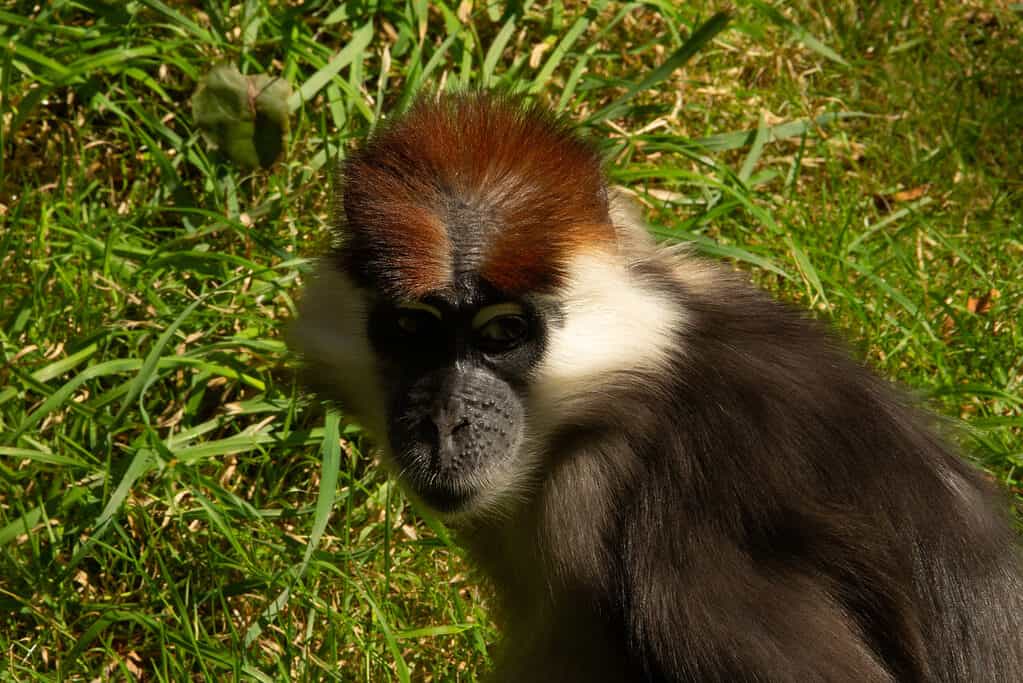
©iStock.com/Ian Peter Morton
The collared mangabey, also known as the red-capped mangabey or the white-collared mangabey, is a member of the family Cercopithecidae of Old World monkeys. It is native to the swampy habitats, mangroves, and valley forests of the Atlantic coast of Central and West Africa, stretching from Guinea to Gabon.
This primate is called this way because of the colors on its head and neck. It has a chestnut-red cap and a white collar that looks like a beard. The rest of its fur is gray, while the underside is white. Its gray, white-tipped tail is longer than its body. The average head-body length of collared mangabeys is 19–26 inches in males and 18–24 inches in females. The webbing between their fingers helps them move through the water.
Collared mangabeys are mostly herbivorous and feed on fruits, nuts, seeds, leaves, buds, and grass. They occasionally eat small invertebrates, such as insects. These primates typically live in groups of around 10-35 individuals.
2. Babirusa (Babyrousa)
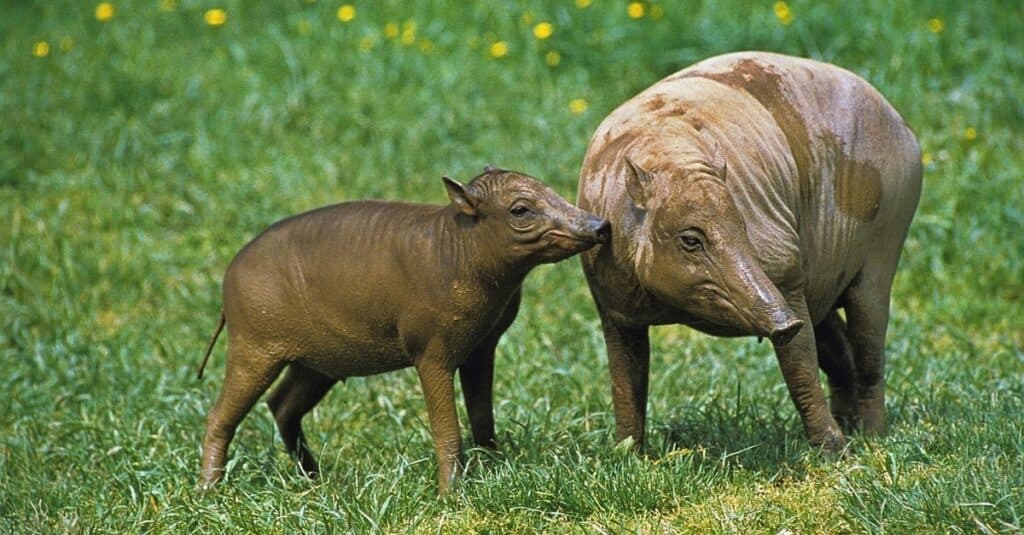
©slowmotiongli/Shutterstock.com
The word babirusa is derived from the Malay language and translates to mean "pig deer," as this species has a wild-growing tusk growing like deer antlers. Baribusas inhabit the swampy rainforests of the Indonesian islands of Togian, Buru, Sulawesi, and Sula.
Babirusas are barrel-shaped animals with bristly skin ranging from a dull gray to brownish. An adult babirusa stands approximately 2 feet tall with a head-body length of 3 feet and can weigh over 200 pounds.
Like all pigs, babirusas are omnivorous and will eat almost anything they come across. This includes leaves, fruits, nuts, insects, mushrooms, fish, and smaller mammals. They are diurnal animals and are also great swimmers and runners.
3. Marsh Rabbit (Sylvilagus palustris)
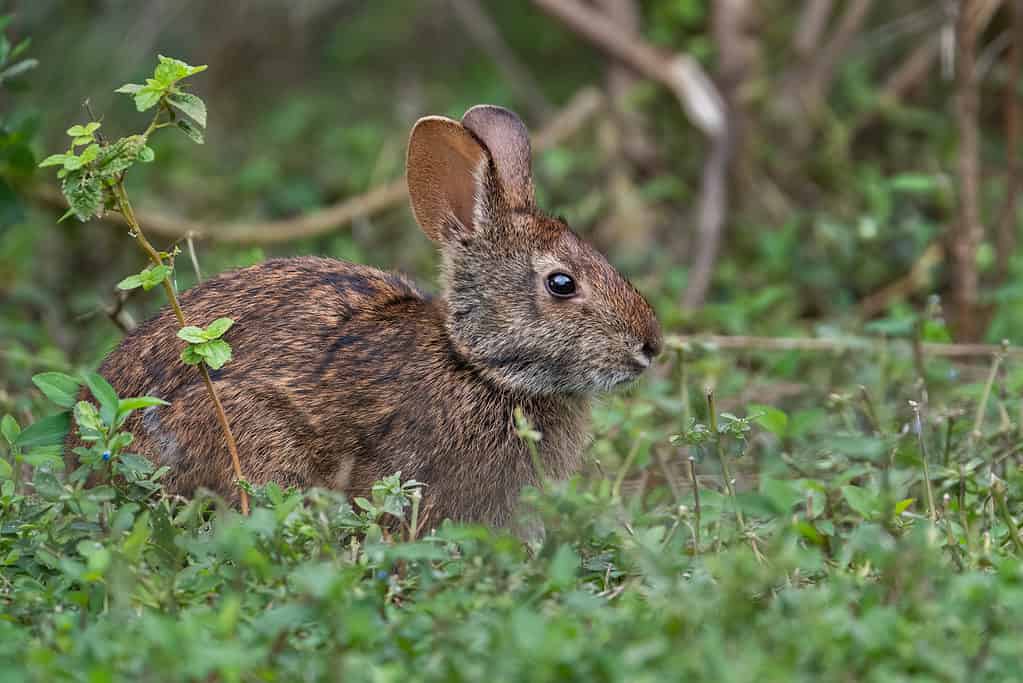
©iStock.com/MattCuda
The marsh rabbit is a semi-aquatic mammal found in the Coastal Plains of the southeastern United States. Unlike most rabbits, marsh rabbits have evolved to live in and around the water. They are excellent swimmers and dive into the water to escape predators. Marsh rabbits are smaller than eastern cottontails and have short limbs and small, round ears.
The marsh rabbit diet comprises aquatic plants, such as marsh pennywort, marsh grass, water hyacinth, cattail, rushes, amaryllis, and duck potato. They can also feed on blackberry, greenbrier, rhizomes, and other woody and semi-woody plants.
4. The Fishing Cat (Prionailurus viverrinus)
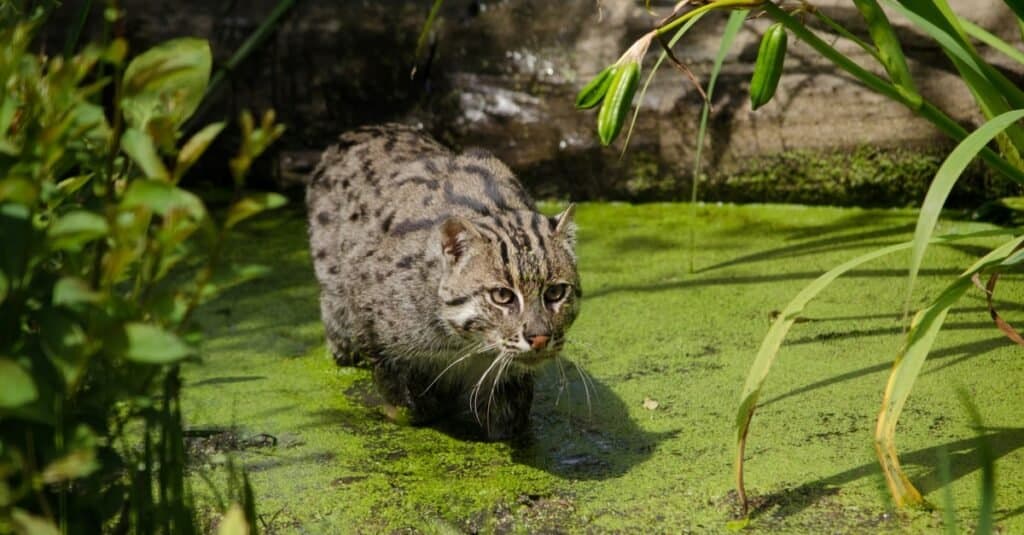
©Gemma Simpson/Shutterstock.com
The fishing cat is a medium-sized swamp-dwelling cat with a stocky body, short legs, and a tail. Fishing cats' scientific name is derived from their viverrine or civet-like appearance and not from their adaptation to fishing.
Fishing cats live primarily around freshwater and saltwater habitats, near wetlands, swamps, and marshy areas. They can be found in different parts of Southeast Asia. These swamp-dwelling felines are nocturnal and mainly feed on fish and shellfish. They have webbed paws, which help the cats swim and catch prey. They can also swim long distances, even underwater. Fishing cats are solitary and do not form social groups.
5. Duck-Billed Platypus (Ornithorhynchus anatinus)

©Martin Pelanek/Shutterstock.com
Commonly known as a platypus, this semi-aquatic mammal inhabits various Australian wetlands. It is a monotreme or egg-laying mammal with a distinctive beak-like elongated snout and webbed feet. The platypus is nocturnal and feeds on mostly aquatic invertebrates, but it can also eat shrimp and fish. Its fur is waterproof and keeps the duck-billed platypus warm.
The duck-billed platypus has a unique swimming technique: it propels itself in an alternate rowing motion of its front feet. It is also known for its distinctive venomous spur on its hind legs. The platypus lacks teeth but uses gravel as makeshift teeth to grind the food. Though it has a life expectancy of up to 17 years in captivity, this species is listed as Near Threatened because of hunting. It is fully protected throughout its range.
Reptiles That Live in and Around the Swamp
1. Crocodilians (Crocodilia)

©Firepac/Shutterstock.com
Crocodilians are semi-aquatic reptiles inhabiting all continents except Europe and Antarctica. There are 28 species of crocodilians, including alligators, crocodiles, caimans, and gharials.
All crocodilians are found in wetlands habitats like mangrove swamps, estuaries, and rivers, either partially or wholly submerged, appearing like logs floating in the water or washed up on shore.
These iconic wetland species can hold their breath underwater for more than an hour. Crocodiles and gharials have salt-secreting glands in their tongues, which they use to get rid of excess salt. Crocodilians are brilliant swimmers and can reach speeds of up to around 20 miles per hour. On land, they can run at approximately 9 miles per hour.
2. Green Anaconda (Eunectes murinus)

©Patrick K. Campbell/Shutterstock.com
This is the heaviest and one of the longest snakes in the world, reaching lengths of up to 30 ft 6 inches. This species is a boa family member, and like all boas, the green anaconda is a non-venomous constrictor. As the name implies, this snake has an olive-green body with black markings. Its eyes are on the top of the head, thus helping it navigate the surroundings while swimming.
Green anacondas inhabit South America's rivers, marshes, slow-moving streams, and swamps. However, if the water source temporarily dries up, these reptiles can adapt and survive by establishing temporary burrows in mud and going dormant to prevent themselves from drying out. They are opportunistic apex predators and feed on various animals, from fish to mammals and birds.
3. Florida Softshell Turtle (Apalone ferox)
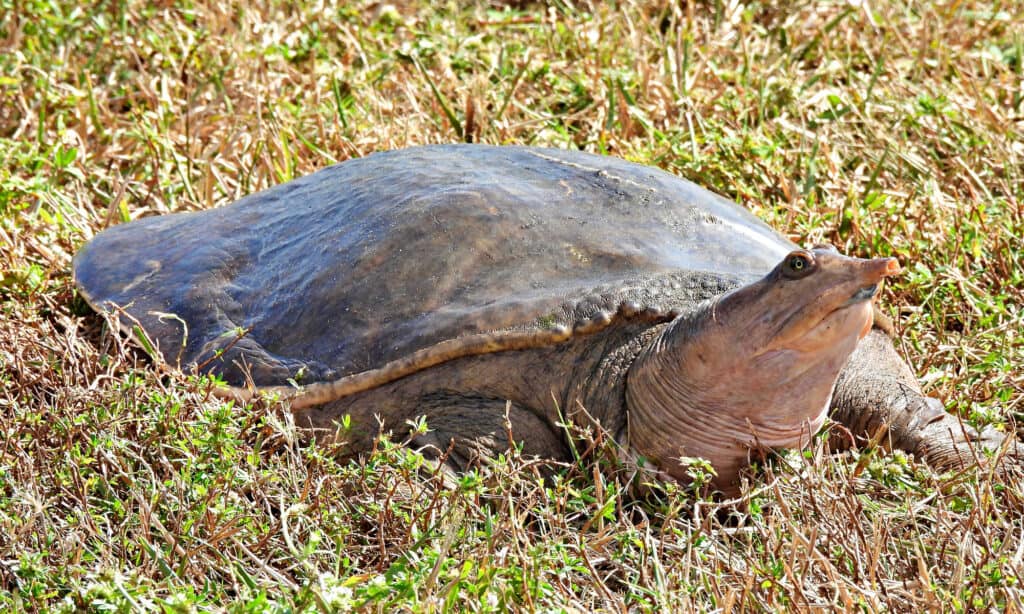
©iStock.com/passion4nature
Another reptile that lives in and around swamps is the Florida softshell turtle. It's almost entirely aquatic, living primarily in slow-moving or still-water bodies, including swamps, marshes, lakes, creeks, and ponds.
Unlike most turtles, Florida softshell turtles lack a hard shell. Instead, it has a cartilaginous carapace, which is covered in thick, leather-like skin. Like all softshells, it is fast and agile in water and on land. The Florida softshell turtle is omnivorous; it primarily feeds on aquatic invertebrates, fish, crustaceans, insects, and frogs.
4. Cottonmouth (Agkistrodon piscivorus)

©Kristian Bell/Shutterstock.com
The cottonmouth snake is a venomous pit viper species belonging to the family Viperidae. It is one of the world's few semiaquatic vipers. Cottonmouths range throughout the southeastern United States and are found in slow-moving and shallow lakes, streams, marshes, and swamps. They're called so because of the white coloring inside their mouths, which they display when threatened.
On average, cottonmouth snakes measure 2 to 4 feet long. They have thick, muscular bodies covered in ridged scales. They are excellent swimmers and can hold their heads at a 45-degree angle when swimming or crawling. They are active at night and during the day. These snakes are carnivorous, eating a variety of small animals such as frogs, fish, lizards, rodents, insects, and other snakes. They can also bite while underwater and are known to resort to cannibalism.
Birds That Live in and Around the Swamp
1. Great Blue Heron (Ardea herodias)

©Brian Lasenby/Shutterstock.com
The great blue heron is a large bird found in North America and Central America. It is common in shorelines, river banks, swamps, ponds, estuaries, and marsh edges. This wading bird has a long, pale gray neck and legs, gray-blue flight feathers, and a dull yellowish-orange bill. It can stand motionless for long periods while hunting prey such as fish, crustaceans, frogs, aquatic insects, rodents, and snakes.
Great blue herons can be seen in shallow waters around swamp edges or perched atop stumps and logs. They nest in groups called rookeries or heronries. Some birds are migratory, spending their summers in the north and wintering in the south.
2. Shoebill (Balaeniceps rex)
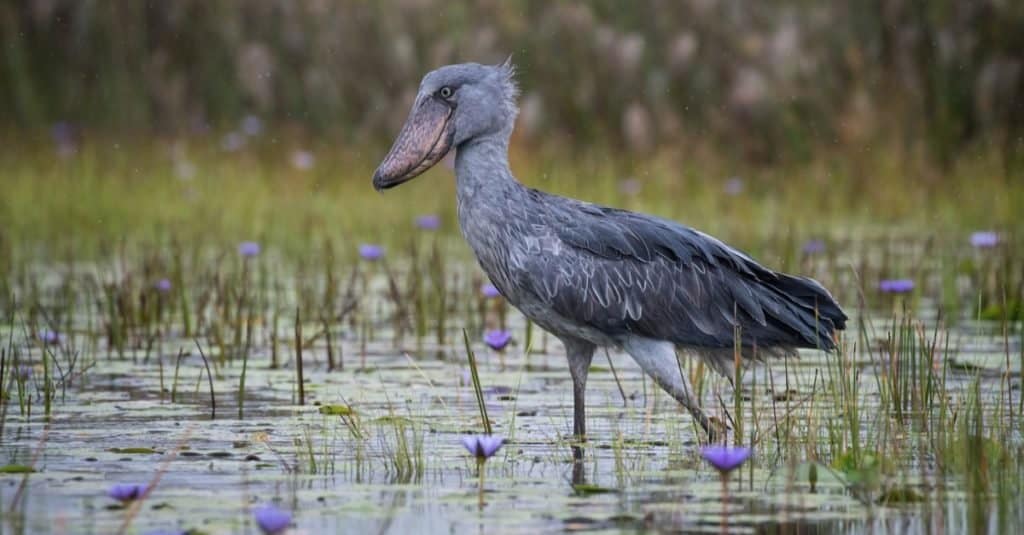
©Petr Simon/Shutterstock.com
The shoebill or shoe-billed stork is a tall, long-legged wading bird mainly found in the swamps of tropical East Africa. It gets its name from its large shoe-shaped bill adapted to hunting. It stands up to around 60 inches, has a 7 – 8 feet wingspan, and weighs between 8.8 and 15.4 pounds. Its plumage is mainly blue-gray, while the flight feathers are of a darker slaty-gray color.
Shoebills are piscivorous and mainly prey on marbled lungfish, African lungfish, tilapia, catfish, and Senegal bichir. However, they can feed on snails, water snakes, baby crocodiles, small waterfowl, and rodents. They usually hunt alone during the day and use their long bills to scoop their prey. Though shoebills are docile to humans, they remain solitary or gather in small groups during the breeding season.
3. Black Swan (Cygnus atratus)

©efirm/Shutterstock.com
Black swans are remarkable waterbirds native to the southern hemisphere. Initially, these birds were considered sedentary, but recent research has shown they're highly nomadic. Black swans primarily live in and around rivers, lakes, and swamps. Although they prefer habitats with aquatic vegetation, they venture onto terrestrial areas to find food when necessary.
Like other swans, black swans feed by dipping their long necks and heads under the water and keeping their heads flat against the bottom while positioning their bodies horizontally. These birds form strong monogamous pair bonds. Moreover, both parents take care of their young.
Aquatic Species That Live in and Around the Swamp
1. Red Swamp Crayfish (Procambarus clarkii)
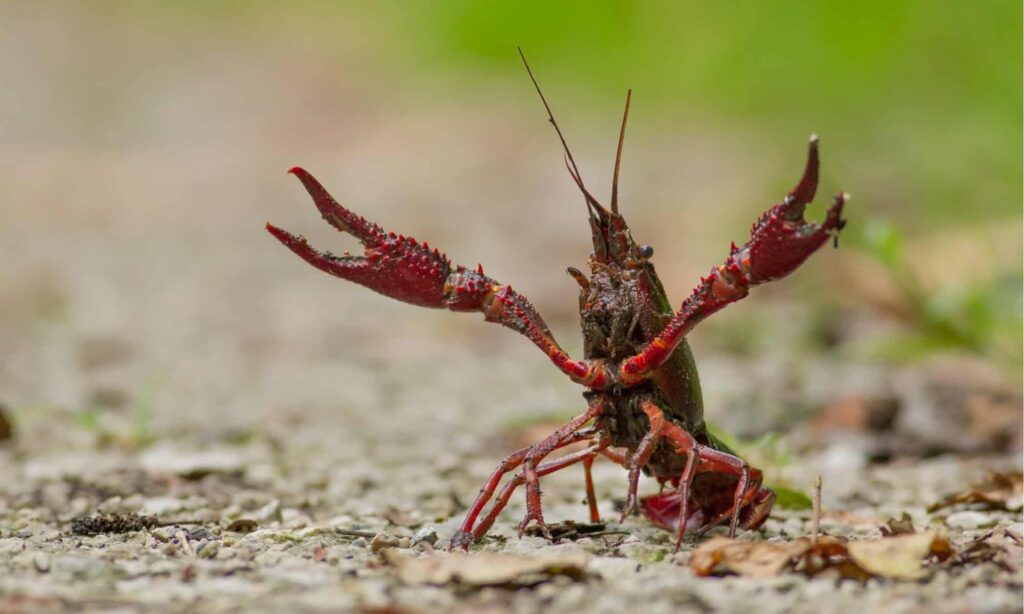
©rugco/Shutterstock.com
The red swamp crayfish, or the Louisiana crawfish, is a crayfish species that lives in the wetlands of the southern United States and north-eastern Mexico. This invasive species is a crustacean that burrows itself deep into its habitat's substrate and creates large mounds of sand and soil called chimneys.
Red swamp crayfish are voracious predators, primarily preying on the local snails, fish, and amphibian eggs, but can sometimes feed on plants within their range. These aggressive creatures are also known to compete with native crayfish, which can be detrimental to local ecosystems.
2. Largemouth Bass (Micropterus salmoides)
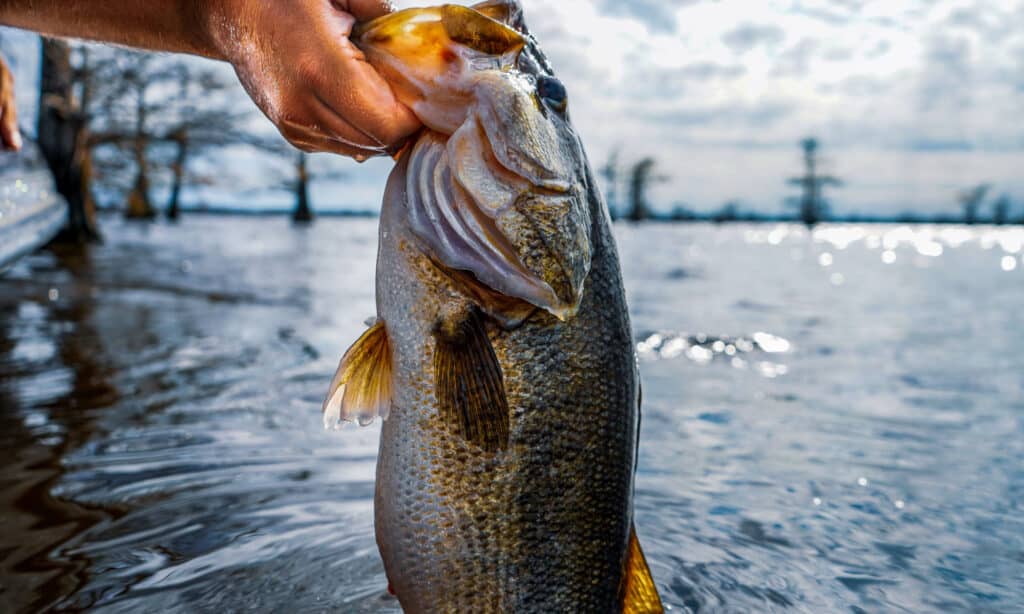
©Maclane Parker/Shutterstock.com
Although largemouth bass commonly inhabit various wetlands, such as swamps, they require cleaner water with dissolved oxygen for survival. They are the largest black bass species, growing up to 29.5 inches in length. These fish are typically more active when the water is warm, as it speeds up their metabolisms. Their lifespan in the wild reaches 10 to 16 years and depends on various factors such as habitat quality and available food sources. Juvenile largemouth bass are social but become solitary as they mature.
3. Everglades Pygmy Sunfish (Elassoma evergladei)
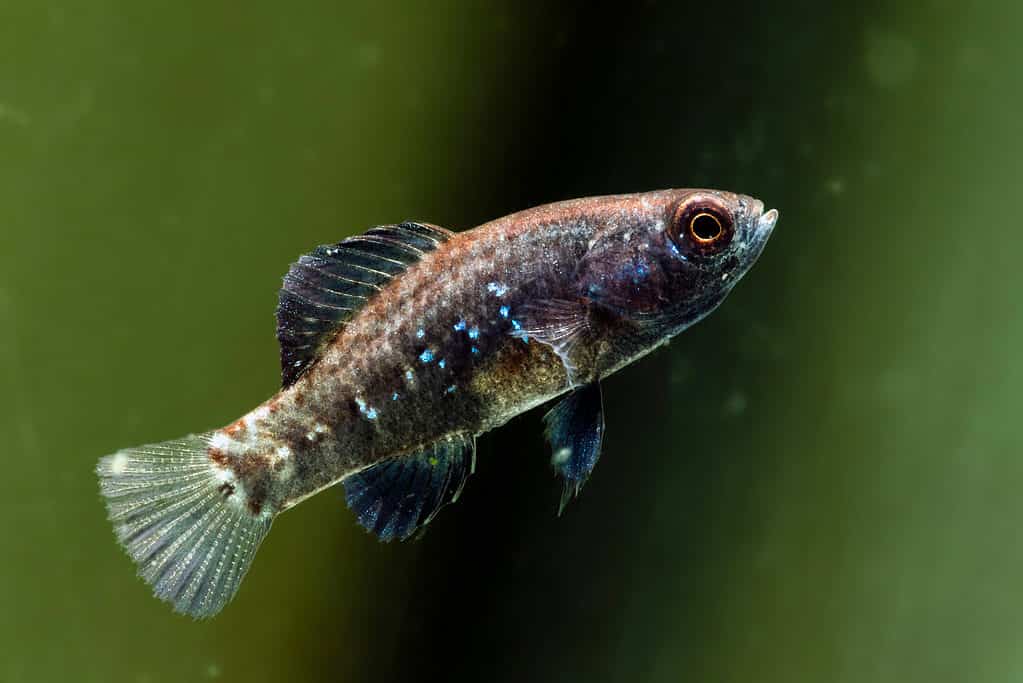
©InsectWorld/Shutterstock.com
The Everglades pygmy sunfish is a small fish found in temperate and subtropical swamps, marshes, and shallow waters with heavy vegetation. Growing to a maximum of 1-1.5 inches in length, these small fish are shy and secretive, spending most of the day hiding under leaf litter and aquatic plant roots. They feed primarily on worms and crustaceans, making them an important ecological component in many swamp environments.
Comments
Post a Comment